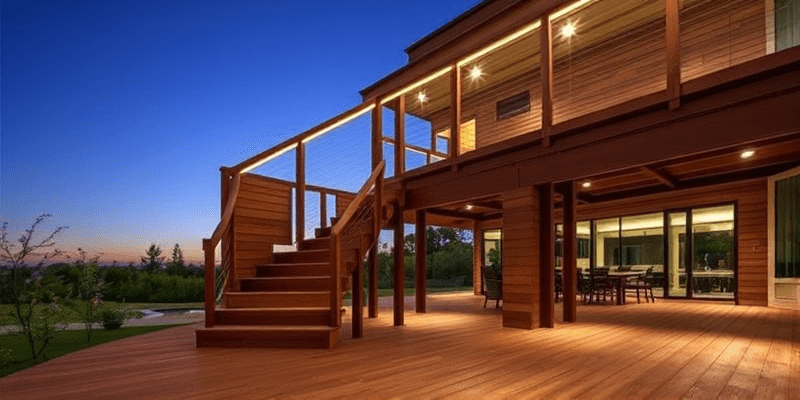How Advanced WPC Engineering Enhances Decking Durability
Introduction
In the realm of outdoor construction and landscaping, the quest for materials that combine durability, aesthetics, and sustainability is ongoing. One standout solution that has emerged is Wood-Plastic Composite (WPC) decking. By synergizing the best properties of wood and plastic, advanced WPC engineering has revolutionized the decking industry. This article explores how the innovations in WPC technology significantly enhance the durability of decking materials, making them a preferred choice for homeowners and builders alike.
Understanding WPC Engineering
Wood-Plastic Composites are materials composed of wood fibers or flour combined with thermoplastics, such as polyethylene or polypropylene. The engineering behind WPC has advanced drastically over the past few decades. Through the use of various additives, improved processing techniques, and enhanced formulations, modern WPC products are designed to withstand environmental challenges better than traditional wood decking.
Enhancements in Durability
1. Resistance to Moisture and Fungi
One of the primary advantages of advanced WPC engineering is its resistance to moisture. Traditional wood decking is prone to rot, warping, and discoloration when exposed to water. WPC materials, however, have a closed-cell structure that minimizes water absorption. Additionally, modern formulations include anti-fungal additives, preventing mold and mildew growth. This results in a longer lifespan and lower maintenance for the decking.
2. Protection from UV Rays
Another critical aspect of durability is UV resistance. Direct sunlight can degrade wood, leading to fading, splintering, and cracks. Advanced WPC engineering incorporates UV stabilizers that protect against harsh sunlight, ensuring that the composite maintains its color and structural integrity over time. As a result, homeowners can enjoy their outdoor spaces without the frequent need for repainting or refinishing.
3. Enhanced Wear Resistance
In high-traffic areas, durability is paramount. Advanced WPC products often undergo processes such as co-extrusion, which creates a protective outer layer that enhances wear resistance. This layer provides an additional shield against scratches, dents, and everyday wear and tear. Consequently, WPC decking can withstand heavy foot traffic, making it ideal for patios, pool decks, and other outdoor settings.
Environmental Impact and Sustainability
Advanced WPC engineering is not just about enhancing durability; it also focuses on sustainability. Most WPC materials are manufactured from recycled wood and plastic, reducing the reliance on virgin resources and lowering environmental impact. Furthermore, the longevity and low maintenance requirements of WPC decking mean that less material is needed over time, contributing to sustainable practices in construction and landscape design.
Conclusion
The advancements in WPC engineering represent a significant leap forward in decking technology, offering exceptional durability that meets the demands of modern outdoor living. From moisture resistance to UV protection and wear resistance, WPC decking combines functionality with eco-friendliness. As more homeowners and builders recognize the benefits, it’s clear that advanced WPC engineering will continue to play a pivotal role in the future of outdoor construction.

